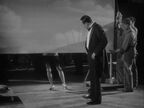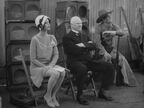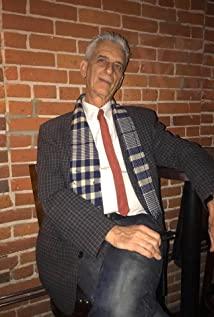The film kicked off with a successful screening of a silent film, with the lead actor George Valentine - a witty and expressive star - presented to the audience. The next day when he was photographed by reporters, George happened to meet Pepy Miller, one of his female fans, who was very talented in acting, and took a photo with her. Pepi was encouraged to decide to act because he had no intention of being noticed this time. In the process of playing one by one, Pepi's performance caught George's attention. But just when a spark of love appeared between them, a turning point in film history completely changed the fate of the two.
Compared with today's 3D movies, sound movies have left silent movies behind more quickly, and George has been abandoned by the production company. And among the new batch of stars, there is Pepi. The unwilling George himself spent all his capital to shoot a silent film, but suffered a fiasco. Since then, he has never recovered, and only the puppy is left by his side. Just when George was desperate and was about to be burned to death in the fire of film, Pepi, who had already become a big hit, learned about him from the newspaper and sent him home from the hospital. The two finally came together. After struggling with self-esteem and self-denial, George finally accepted Pepi's help and love, and also accepted sound movies, and began a new interpretation journey. The movie ends happily in the dance of the two.
It would be underestimated if the artist just won an Oscar for retro themes. In terms of cinematography and technique, the film is a classic.
First of all, in terms of sound, the whole film is mainly silent, and the rendering of all emotions is expressed through music. The witty and lighthearted humor when happy, the gloomy sadness when sad, all unfolded in the soundtracks such as string music and saxophone, bringing people into the United States in the 1920s, the prosperous and optimistic "Golden Age". The music changes as the plot develops. For example, when Pepi competed for the role, she danced in front of the crowd, and the music followed her dance steps; in the dance of the hero and heroine, the music laid out a kind of romance in the repeated melody of the piano and wind music; when George laughed at the sound film, he returned to In his own room, the music stopped abruptly, and all he could hear was the sound of glasses, brushes, and stools he touched, and the mockery of the woman passing by in the hallucination; and at the end of the movie, when the male Pepi finished dancing in the Panting in front of the camera, there was a voice in the film, and the director, producer, and everyone present began to speak, symbolizing the beginning of a new chapter in the film industry and George's film career, as well as his love with Pepi.
Because this is a silent film, it must rely on the language of a large number of shots to convey feelings. The language hints are ingenious and decent, and intriguing. At the beginning of the movie, George's wife is reading a newspaper at the dinner table. The headline of the newspaper reads who's that girl, which refers to the content of the newspaper and also seems to be an angry question from the wife. In the scene where George puts a mole in front of the mirror for Pepi, the words on the poster in the background are THIEF OF HER HEART; when George walks out of the auction house, lonely star is written on the side of the building, implying the predicament of the protagonist; newspapers that appear from time to time News is often used as a story transition and a camera cut.
Many scenes in the film are very exciting and unforgettable, and their exquisite design and profound meaning silently convey the profound thinking of the film. After Pepi and George finished dancing, they came to George's room alone, saw his clothes, couldn't help walking over, put a hand into the sleeve, imitated George's hand, and hugged the clothes, Pepi was intoxicated. The expression fully expresses her admiration for George. After George's failure, he went to watch his silent movie alone. There were very few audiences in the huge cinema. At the end of the movie, George fell into a swamp in despair, just like George's life in reality, and Pepi, who was helpless, was like a box Like Pepi in the , he looked at the lonely George with pity, but couldn't help it. The contrast inside and outside the play makes people feel sour and sad. In the middle of the film, the life of the male Pepi is constantly compared, with Pepi's high-profile contrasting George's disappointment; George was drinking in the bar to drown his sorrows, seeing his own version of the villain on the table, holding a gun and laughing at his failure; George I was deeply touched when I saw my property in Pepi's house. When the door was opened, behind George's confused expression, there was a portrait of his own success. A beam of light just hit it, and the smile behind it seemed to be to George. The ridicule expressed George's humiliation and self-esteem injury; when George stood in front of the window of the clothing store and looked at the suit in the showcase, it seemed that the dress was on George's body in the reflection, again comparing the life situation of the past and today. When George was crying and trembling to pull the trigger to commit suicide, the four letters BANG! appeared on the screen. It turned out that Pepi's car crashed into a tree, which not only made the audience feel relieved, but also indicated a false alarm.
Of course, the key to the natural realization of all this is the male and female protagonists in the play. The actor is the famous French movie star Dujardin, who won the Oscar and the best actor at the Cannes Film Festival for this film. The heroine is Berenice Bejo, an Argentine actress. The hero's brilliant and delicate performance, and the rich expressions; the heroine's enthusiasm is like fire, and the performance is smooth and natural. Among them, the scene of George leaving the company and being on the stairs with Pepi, the loss, sorrow and envy in his expression that could not be concealed but had to be concealed, as well as the tears shed by the heroine sitting in the car after the auction house, are all very touching.
Perhaps the best way to express a silent black and white film is to let it interpret a beautiful story by itself. Many people who are not familiar with black and white films are deeply moved after seeing this film. At the same time, revisiting a movie a hundred years ago in this form is also the most stylish. Can't help but say that this is a smart choice. And the director's grasp of this form, when it poses a challenge to it, also leaves a vast world to display his talents. Maybe everyone's evaluation of this movie will be different, but no one can deny the beauty that it brings people the purest movie.
View more about The Artist reviews











